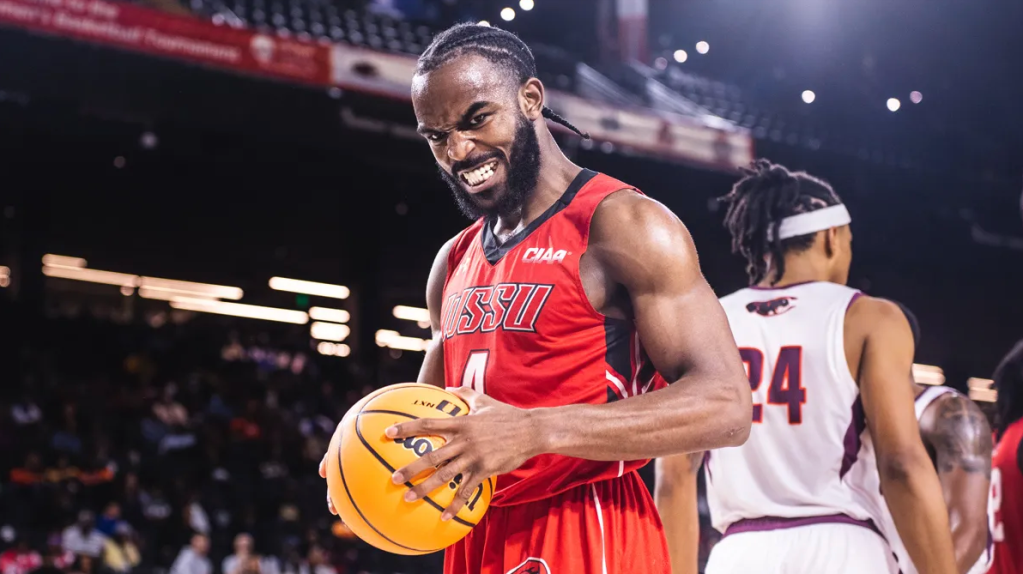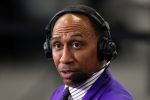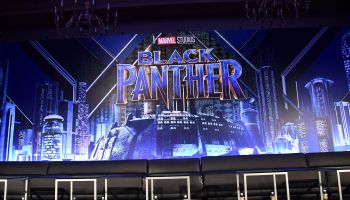
Source: Alberto E. Rodriguez / Getty
In the opening moments of Black Panther, “Oakland, CA. 1992” flashes on the screen.
Cries of “Aayyeeee!” immediately filled the theater last week as I watched the film in that very city—the birthplace of the Black Panther Party for Self-Defense. We were proud.
(WARNING: Black Panther spoilers ahead.)
That seemingly small detail connected the film to a liberation narrative: the radical idea that Black people could defend themselves against both structures and agents of conditions that render Black men over-represented among the most incarcerated population in the world and Black women among the poorest and most exploited.
Like millions of others, I adore good superhero movies. I love to experience heroes not just for their superior strength, agility, and intelligence, I like to study them for the elements in the ordinary human experience that reflect the potential to create the best versions of ourselves. In Black Panther, I see a rendering of our truths left to the imagination of a free mind and a more rigorous invitation to that mind than most. I also like to explore the villains and the sources of their discontent and rage.
Here’s my reading of the primary antagonist in Black Panther: It’s not Erik Killmonger (Michael B. Jordan). Killmonger is redeemable and I hope everyone watching could see that. King T’Challa (Chadwick Boseman) sees it and offers him an opportunity to be healed while watching that glorious Wakandan sunset. I see Killmonger’s actions, and the rage that brought them to life, as a byproduct of the movie’s actual villain: Oppression.
If Killmonger’s self-inflicted scars—“one for each kill,” he boasts—are meant to convince us of his willingness to violently rage against Wakanda’s inaction, we should be terrified by the greatest scar of them all—the internal one we can’t see. Killmonger’s mission to provide the Diaspora with tools to protect and defend itself was righteous. His ability to recognize—like his father, Prince N’Jobu (Sterling K. Brown)—that oppression thrives on isolation and the absence of protection, was spot on. That’s why those who dabble in the spread of oppression seek to keep us separate. However, it was his inability to see an alternative between the zero-sum proposition of incarceration/bondage or death that speaks to the trauma of internalized oppression. Killmonger is meant to symbolize what happens when we tap into our weakness. When people believe the worst about themselves, and the options in their lives, it warps their capacity to lead. Their understanding of justice shrinks and they see only a pie that must be divvied, rather than a phenomenon of infinite possibility.
The more difficult, more radical, alternative to weaponizing vibranium would be to teach the Diaspora how to cultivate it. Like the Black Panther Party, which fed and housed poor people, educated children, and uplifted a politics of liberation as a collective act of love, King T’Challa is meant to symbolize what leading with humility and distributed knowledge looks like, particularly in the wake of his father’s complicity in the global oppression of Black people. It’s an alternative to the toxic representations of leadership that so many nations, real and imagined, embrace.
It would be absurd not to mention one of Wakanda’s other most precious resources: gender equality. King T’Challa is strong because the Dora Milaje are strong. Loyal and brave, the Black women in this film see oppression for what it is and they commit to dismantling it in public and in private. I love us! But the truth is that we’re also touched by an oppression that makes a cameo in the film—the “wig snatching” of General Okoye (Danai Gurira) was a meditation in and of itself.
Black Panther’s most important offering may be its invitation for the Diaspora to mend its severed ties, to reunite cousins in a forgotten legacy. As “constructed” as it may be, this story is as much a pan-African narrative as it is a fairytale for the Motherland. But if the villain is oppression, then the story of redemption and healing is not a far-fetched fantasy. Liberation is found in the rejection of the structural, individual, cultural, and internalized ways that oppression informs the thoughts, feelings, and actions that undermine our collective uplift.
Social and technological outreach to the Diaspora from a mythical Wakanda may not appear that complicated, but if our practical and experiential knowledge in real life teach us anything, it’s that repairing a broken relationship is anything but simple. It’s about trust. It’s about accountability. It’s about love. It’s about having the courage to believe that we already possess the greatest weapon against oppression. We just need to be brave enough to activate it.
Monique W. Morris is the author of PUSHOUT: The Criminalization of Black Girls in Schools (The New Press, 2016)
















